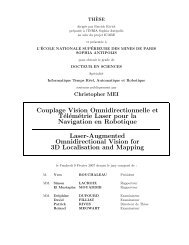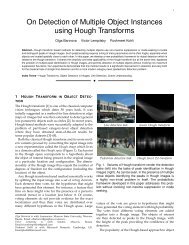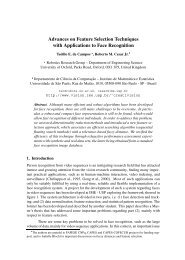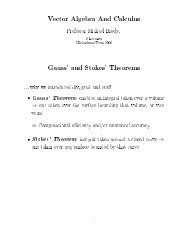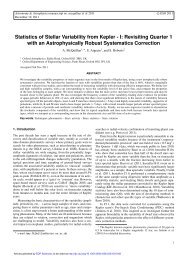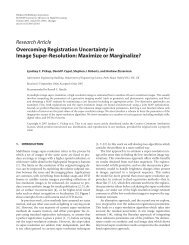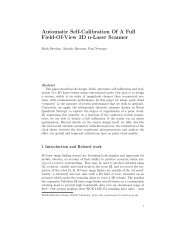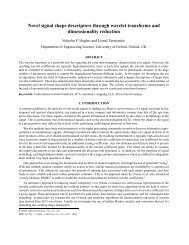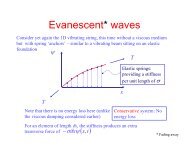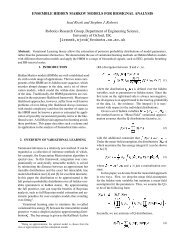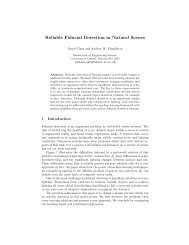Physiological Basis of the Electrocardiogram
Physiological Basis of the Electrocardiogram
Physiological Basis of the Electrocardiogram
You also want an ePaper? Increase the reach of your titles
YUMPU automatically turns print PDFs into web optimized ePapers that Google loves.
1.2 The Physical <strong>Basis</strong> <strong>of</strong> Electrocardiography 11<br />
Figure 1.8 Normal features <strong>of</strong> <strong>the</strong> electrocardiogram. (From: [2]. c○ 2004 MIT OCW. Reprinted<br />
with permission.)<br />
for three surface ECG leads, I, II, and III, are shown. Note that <strong>the</strong> QRS axis is<br />
perpendicular to <strong>the</strong> isoelectric lead (<strong>the</strong> lead with equal forces in <strong>the</strong> positive and<br />
negative direction). Significant changes in <strong>the</strong> QRS axis can be indicative <strong>of</strong> cardiac<br />
problems.<br />
Figure 1.8 illustrates <strong>the</strong> normal clinical features <strong>of</strong> <strong>the</strong> electrocardiogram,<br />
which include wave amplitudes and interwave timings. The locations <strong>of</strong> different<br />
waves on <strong>the</strong> ECG are arbitrarily marked by <strong>the</strong> letters P, Q, R, S, and T 12 (and<br />
sometimes U, although this wave is <strong>of</strong>ten hard to identify, as it may be absent,<br />
have a low amplitude, or be masked by a subsequent beat). The interbeat timing<br />
(RR interval) is not marked. Note that <strong>the</strong> illustration uses <strong>the</strong> typical graph-paper<br />
presentation format, which stems from <strong>the</strong> early clinical years <strong>of</strong> electrocardiography,<br />
where analysis was done by hand measurements <strong>of</strong> hard copies. Each box is<br />
1mm 2 and <strong>the</strong> ECG paper is usually set to move at 25 mm/s. Therefore, each box<br />
represents 0.04 second in time. The amplitude scale is set to be 0.1 mV per square,<br />
although <strong>the</strong>re is <strong>of</strong>ten a larger grid overlaid at every five squares (0.20 second/<br />
12. Einthoven, who received <strong>the</strong> Nobel Prize in 1924 for his development <strong>of</strong> <strong>the</strong> first ECG, named <strong>the</strong> prominent<br />
ECG waves alphabetically, P, Q, R, S, and T. The prominent deflections were first labeled A, B, C, and<br />
D, in his preceding work with a capillary electrometer, which did not record negative deflections. The<br />
new nomenclature was to distinguish <strong>the</strong> superior signal produced by a string galvanometer. For more<br />
information, see [6].



